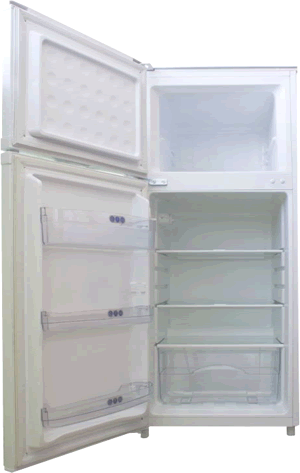 |
LDPE - Low Density Polyethylene |
Polyethylene was first synthesized by Reginald Gibson and Eric Fawcett at the British company Imperial Chemical Industries (ICI) in the year 1933. PE has emerged into two types, low density polyethylene (LDPE) and high density polyethylene (HDPE).
LDPE belongs to the group of polyolefins and is a semi-crystalline polymer, produced by polymerization of ethylene. Its unique flow properties may be attributed to large volumes of long-chained branching of its molecules (usually with more than 20 carbon atoms), which alleviate its processing for numerous technologies and ensure that LDPE is still first choice for a broad range of applications, despite the competition of more recent, low cost polyethylen types. LDPE has been produced since 1939 and is the oldest polyethylene product. Because of its softness, toughness and flexibility LDPE is used for strong, ductile articles of daily use, like screw caps and protective covers. Today the most popular applications are plastic sheets for the production of shopping bags, packing materials and protective sheets for agricultural purposes.
Because LDPE shows special rheologic characteristics and is easy to handle in the production of plastic sheets, it is still very popular in many regions of the world, although it is competing against the more recent polyethylene types HDPE and LLDPE. However, the trend to substitute LDPE with other polymers is already decreasing in the markets of the industrial nations. There are good prospects for LDPE in Western Europe, USA and Japan, for instance for applications of coating and packing material for medical products. |
|
|
LDPE Properties
Beneficial properties of polyethylene plastics are their hardness, high tensile strength and a very good barrier performance against humidity. Their properties may be specifically changed through appropriate co-polymerisation. One characteristic of polyethylene, which is especially important, is its easiness to heat-seal packing materials, due to the relatively low melting point range. However, the barrier performance against oxygen and organic matters is only moderate.
Properties of polyethylene vary depending on the basic parameters density/crystallinity, molecular mass distribution, and molecular weight. Yield strength and rigidity, for instance, are increasing with density. However, clearness is generally improving with decreasing density. While HDPE-plastic sheets are opaque and feel brittle, LDPE-plastic sheets are soft most of the time and comparatively clear. The lower the crystallinity, and thus the density, the more flaccid and flexible is the material. An LDPE-product with a density of 0,918-g/cm³ shows a better firmness against environmental stress corrosion and worse barrier performance than a product with a density of 0,930 g/cm³. Density and ease of flow are principally dependent on the amount of pressure applied during production. By applying high pressure, polyethylene will receive a low density. Compared to HDPE, the structure of LDPE is lighter and looser as far as weight is concerned. When dented, it will rebound to its initial form.
|
LDPE Applications
Its first commercial use came during World War II, where it played an important factor in the war efforts by insulating radar cables on submarines, thus greatly enhancing their performance. Today, the most common applications for LDPE are wire insulation, heat shrink packing, heavy bags and food packaging. Packaging alone accounts for 55 percent of LDPE use worldwide Industrial uses include parts that need to weldable, machinable and require a degree of flexibility. Low-density polyethylene is also an excellent material for containers and equipment which require resistance to fuels, acids and alcohols. Toys and playground components such as slides and tubes are made of LDPE due to its soft surface and resistance to varying temperatures. Its clearness, resistance to chemical corrosion, low toxicity and absence of smell make LDPE the material of choice for kitchen products and laboratory equipment.
LDPE is completely recyclable and often reformulated into bottles, plastic lumber, bags and new plastic sheets for thermoforming.
|
Other commonly used thermoplastics
|
 |
|